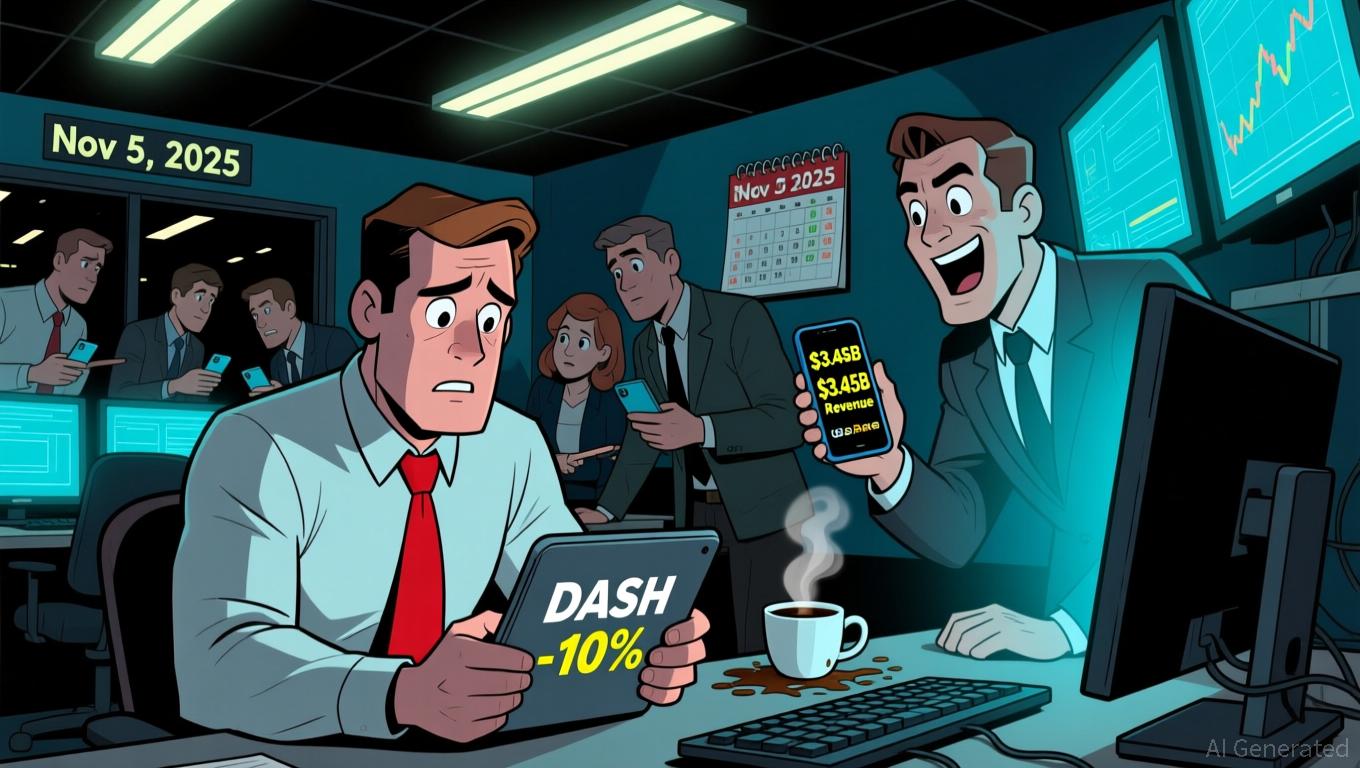AAVE - Fell 1.69% Over the Past 24 Hours as Market Fluctuations and Changes in the DeFi Sector Persist
- Aave’s token (AAVE) fell 1.69% in 24 hours amid broader DeFi market volatility and sector-wide price declines. - Mutuum Finance (MUTM) emerges as a DeFi competitor, raising $18.1M in presale with yield-bearing tokens and a stablecoin plan. - Traditional sector earnings (tech, industrials) indirectly pressured DeFi assets by shifting capital to resilient traditional markets. - Aave’s technical indicators show bearish trends below key support, with RSI in oversold territory and weak MACD momentum. - A prop
On October 30, 2025,
Although competition is increasing, Aave continues to serve as a cornerstone in the DeFi ecosystem. However, its token has underperformed in recent months, largely due to broader market corrections and changing investor attitudes. The downward movement in Aave’s price has been echoed by other DeFi assets, signaling a sector-wide reassessment of risk and reward.
In late October 2025, the overall market environment was marked by major earnings reports from industries such as technology, healthcare, and manufacturing. While these announcements did not directly affect Aave, they contributed to the heightened volatility that has weighed on DeFi tokens. Strong earnings from companies like AerCap and Aptiv demonstrated the resilience of traditional markets, which has led some investors to shift away from higher-risk assets like DeFi tokens.
Technical analysis for Aave indicates a bearish outlook in the short term, with the token trading below important support thresholds. The RSI is currently in oversold territory, while the MACD histogram reflects only mild bullish signals. Both traders and investors are monitoring closely for indications of either a reversal or a continuation of the current downtrend.
Backtest Hypothesis
To assess possible investment approaches for Aave in the current market, a backtesting strategy has been suggested that reviews price movements following significant declines. The idea is to pinpoint days when Aave drops by 10% or more at closing and then study how the price behaves over a set holding period.
By analyzing historical data from 2022 through 2025, the backtest would examine Aave’s price action after such sharp declines. The analysis could use a holding window of 1 to 20 trading days to observe whether there are short-term recoveries or continued losses. If a 20-day holding period is chosen, the goal would be to see if Aave typically rebounds after steep corrections or if it tends to keep falling.
Risk management measures, such as a 5% stop-loss or an 8% take-profit, could be used to limit potential losses. The test would rely on closing prices and could later incorporate volume and sentiment metrics. This methodology could also be applied to other DeFi tokens to compare how they perform after periods of high volatility.
Disclaimer: The content of this article solely reflects the author's opinion and does not represent the platform in any capacity. This article is not intended to serve as a reference for making investment decisions.
You may also like
XRP News Today: Mastercard’s Blockchain Initiative: Regulated Networks Set to Transform International Payments
- Mastercard explores $1.5B-$2B acquisition of MiCAR-licensed crypto infrastructure firm Zerohash to expand Web3 capabilities. - Partners with Ripple to pilot RLUSD stablecoin for credit card settlements on XRP Ledger, enabling instant cross-border transactions. - Zerohash's regulatory compliance and $1B valuation align with Mastercard's strategy to bridge traditional finance and blockchain infrastructure. - RLUSD's NYDFS-backed growth and XRP Ledger integration could reshape global payments while reinforc
DoorDash Shares Drop 10% as Focus on Growth Reinvestment Outweighs Earnings Outperformance
- DoorDash's stock fell over 10% post-earnings despite $3.45B revenue beat, driven by 25% GOV growth and 21% order increase. - Management signaled $300M+ 2026 AI/tool investments and revised Deliveroo's EBITDA contribution down by $32-40M due to accounting changes. - Analysts cut price targets (Wells Fargo to $239) as $754M adjusted EBITDA (up 41%) was overshadowed by reinvestment concerns despite $723M free cash flow. - 42% YTD gains amplified sell-off sensitivity, with 31 analysts retaining "Moderate Buy

Savers Confront a Choice: Lock in Safe 5% Returns or Chase DeFi's Tempting 12%
- Fed rate cuts in 2025 spurred high-yield savings accounts offering up to 5.00% APY, outpacing traditional banks' 0.40% average. - DeFi platforms like ZEROBASE and Maple Finance offer 12-7% APY on stablecoins, but require higher risk tolerance and short liquidity periods. - Banks may reduce APYs if further Fed cuts occur, while FDIC-insured high-yield accounts remain popular for inflation protection. - Alternative assets like Bitcoin and dividend stocks (e.g., Viper Energy's 3.49% yield) show growing comp

Bitcoin News Update: Institutions Remain Wary as Retail Investors Drive Crypto Innovation—The Battle for Dominance Escalates
- Bitcoin fluctuates near $110,000 amid ETF outflows and revised institutional price targets, with long-term holders creating resistance through strategic BTC distributions. - Ethereum and XRP show resilience with ETF inflows and whale activity, while emerging projects like Remittix ($27.8M raised) and Noomez gain traction through innovative tokenomics. - Analysts remain divided: some see $120,000 potential if Bitcoin breaks key averages, while others warn of $72,000 corrections amid macroeconomic uncertai
